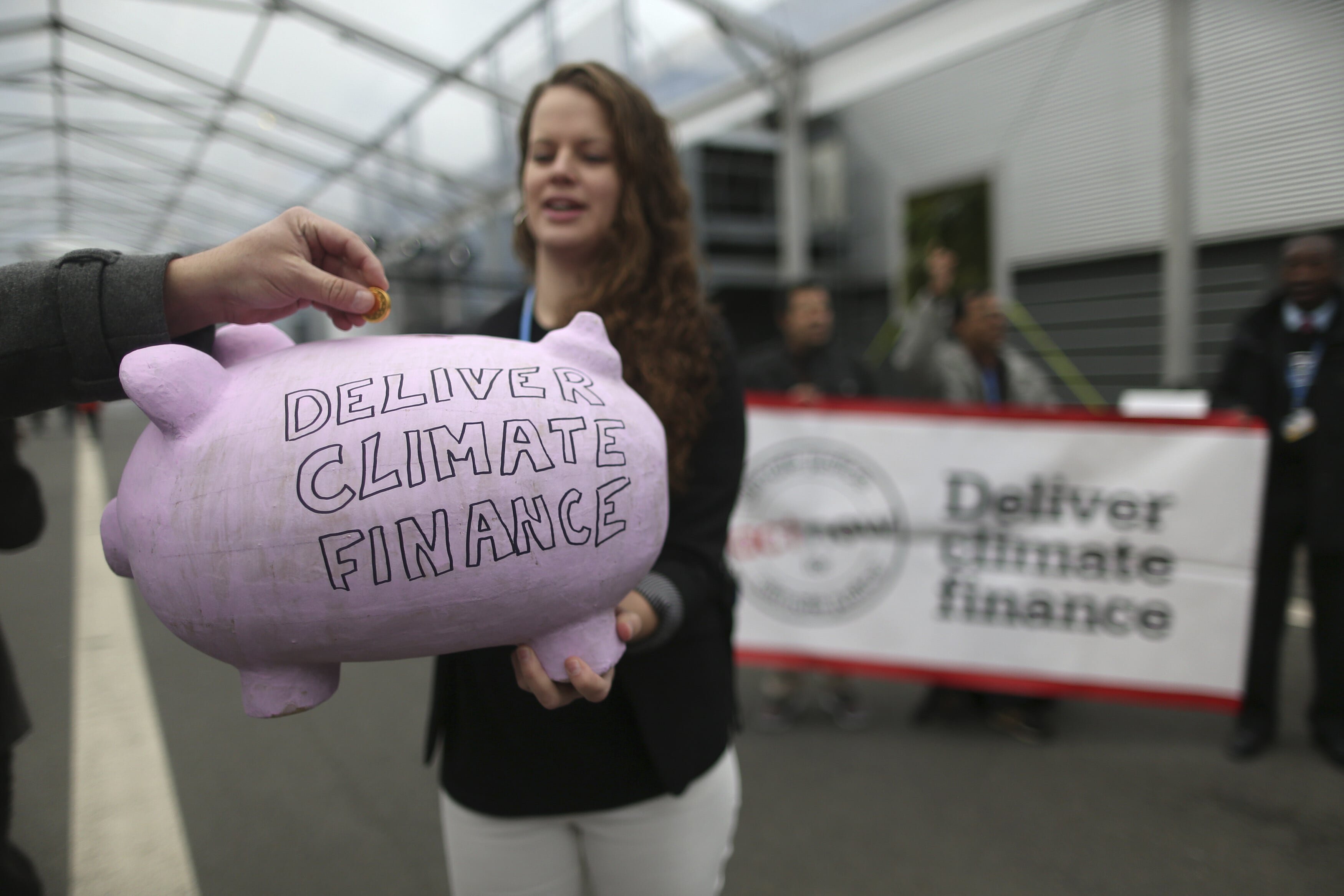What lies ahead for the real estate market in 2016?

Image: REUTERS/Toby Melville
Stay up to date:
Financial and Monetary Systems
This year opened with sharp falls in global commodity prices and growth downgrades for major and emerging economies. In January, the IMF cut its 2016 global growth outlook from 3.6% to 3.4%. A wave of financial market volatility has accompanied these events.
Real estate markets, however, continue to attract capital. Investor interest remains strong, values remain robust, and, as a result, global investment sales volumes are projected to equal 2015 levels or increase by up to 5% this year.
Across global office markets, leasing volumes rose by 8% in 2015, and JLL forecasts a further 5% increase in 2016. These same markets recorded rental growth at a steady but not explosive 3.7% rate in 2015, identical to 2014. The JLL research team forecasts growth of between 3% and 4% for 2016.
Is this steady progress another example of the time lag that traditionally exists between financial and real estate markets? Are slowing economies and skittish financial markets an early indicator of rough waters ahead for real estate? What can we expect from real estate in 2016 and beyond?
Two themes for forecasting real estate markets
The work that JLL has conducted with the World Economic Forum as part of the Asset Price Dynamics project offers insight into the linkages between financial sector volatility and the underlying health of real estate markets.
Consider two key themes that emerge from this analysis:
1) External shock: Predicting market cycles – particularly periodic market “busts” – is an inexact science. But the record shows that the primary source of real estate market instability is typically found outside the sector itself – a sharp rise in interest rates or an abrupt shift in cross-border capital flows, for example. Our analysis of market cycles highlights the complex way in which real estate interacts with other global markets.
Feedback loops are common. Investors buy shopping malls and office buildings because they are confident about the future. This inflow of capital lifts asset values, validating the investment decision … for a time. Slower growth in the global economy certainly matters, because real estate pervades every sphere of economic activity. But slower growth in itself has not been the trigger for significant real estate market downturns in the past.
2) Internal disequilibrium: An external shock is a necessary ingredient, but that alone is not sufficient to cause a major real estate market downturn. A reliable precondition for a serious correction in real estate markets is fundamental disequilibrium within the real estate sector itself.
Typically, but not always, this takes the form of a speculative construction boom, often funded by high levels of short-term debt. If the boom persists for long enough, the outcomes include oversupply, rising vacancy rates, falling rents and a decline in asset values. So, while an economic slowdown will likely be accompanied by a contraction in the demand for space by retailers, office tenants and logistics companies, leading ultimately to falling rents, it’s on the supply side that we should look for more sinister signs of market weakness.
How are the real estate markets faring today?
Globally, real estate markets continue to attract steady inflows of funds. As noted above – and following an 8% rise (at market exchange rates) in global real estate investment volumes in 2015 – volumes are expected to match last year’s levels or grow by up to 5% in 2016. Capital values are expected to rise by 5% through 2016 across major office locations.
With supply identified as a key risk factor, JLL forecasts show a supply pipeline under control, with around 17 million square metres due for completion in 2016 across around 90 global office markets. This is well below the previous development peaks of 2001 and 2008. It follows six years of below-average completions and a global office vacancy rate that has been trending lower since 2010. And the gross supply statistics should, as always, be adjusted for stock withdrawals due to conversion to other uses and demolition.
Of course these are broad global statistics, and there is no substitute for detailed local analysis.
Four cities where office rents will fall
JLL is looking for rents to fall in four major office markets during 2016: Mexico City, Sao Paulo, Mumbai and Singapore. These markets are largely influenced by big supply pipelines. Conversely, some of the major markets are experiencing unsustainably low vacancy rates – London West End (2.6%) and Hong Kong Central (1.2%), for example. Even in the U.S., where office vacancy rates typically track higher than in Europe or Asia, several key markets (Chicago, New York and Boston) have construction pipelines equivalent to less than 2% of existing stock over 2016 and 2017.
Post-2007 it is understandable that market analysts are watchful and financial markets are jittery. False alarms are common as a result. But it was Nobel prize-winning economist Paul Samuelson who noted in 1966 that Wall Street indices had predicted nine out of the last five recessions.

“Statistics can’t replace human judgement”
Over the past 50 years, we have learned much about the machinery that drives market cycles, and our capacity to analyse and process data has improved significantly. Statistical analysis is helpful, but it has yet to replace human judgment. For now, the broad rules of investment remain unaltered: careful debt management, portfolio diversification and detailed research at market and individual asset levels.
We expect that some real estate markets will face supply/demand imbalances through 2016 and 2017. And the yield compression cycle that has characterized commercial real estate markets in recent years must end at some point. We also know that real estate is a cyclical industry, but booms do not always end in busts. As always we need to scan the horizon beyond real estate markets for approaching external shocks. Amber lights are glowing at the macro-economic level.
But for now there is no smoking gun, no systemic factors that anticipate a broad-based market downturn.
Our report, Reforms to Accelerate the Development of India’s Smart Cities, is available here.
Don't miss any update on this topic
Create a free account and access your personalized content collection with our latest publications and analyses.
License and Republishing
World Economic Forum articles may be republished in accordance with the Creative Commons Attribution-NonCommercial-NoDerivatives 4.0 International Public License, and in accordance with our Terms of Use.
The views expressed in this article are those of the author alone and not the World Economic Forum.
Related topics:
Forum Stories newsletter
Bringing you weekly curated insights and analysis on the global issues that matter.
More on Financial and Monetary SystemsSee all
Sandra Waliczek
August 8, 2025
Rebecca Geldard
August 7, 2025
Aurora Matteini and Derek Baraldi
August 6, 2025
Sandra Waliczek and Harry Yeung
July 29, 2025
Pranidhi Sawhney and Adam Skali
July 29, 2025
David Carlin and Sourajit Aiyer
July 28, 2025





